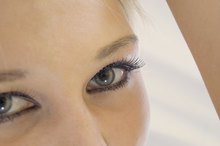What does fact checked mean?
At Healthfully, we strive to deliver objective content that is accurate and up-to-date. Our team periodically reviews articles in order to ensure content quality. The sources cited below consist of evidence from peer-reviewed journals, prominent medical organizations, academic associations, and government data.
- Journal of Cosmetic Dermatology: A Double-Blind Randomized Study Comparing the Association of Retinol and LR2412 With Tretinoin 0.025% in Photoaged Skin
- Journal of Cosmetic Dermatology: A Double-Blind Randomized Study Comparing the Association of Retinol and LR2412 With Tretinoin 0.025% in Photoaged Skin
- Clinical Interventions in Aging: Retinoids in the Treatment of Skin Aging: An Overview of Clinical Efficacy and Safety
- Clinical Interventions in Aging: Retinoids in the Treatment of Skin Aging: An Overview of Clinical Efficacy and Safety
The information contained on this site is for informational purposes only, and should not be used as a substitute for the advice of a professional health care provider. Please check with the appropriate physician regarding health questions and concerns. Although we strive to deliver accurate and up-to-date information, no guarantee to that effect is made.
Retin-A 0.025 Cream Used for Wrinkles
With so many anti-aging products on the market, it is important to know which have proved effective for combating wrinkles and other signs of aging. Retin-A 0.025% cream is one of these products. The cream is used to improve the appearance of fine lines, wrinkles, sun damage and other signs of aging on the skin, as well as to treat acne.
How It Works
Retin-A cream is the brand name of a topical prescription medication called tretinoin, which has been used to treat both acne and older-looking, sun-damaged skin. Retin-A cream is in a class of medications called retinoids, which are forms of vitamin A. Retinoids influence a variety of processes in the skin cells, including cell growth. At least part of the way that topical retinoids act to improve skin wrinkles is by increasing the number of epidermal -- skin -- cells, leading to a thickening of the skin in areas of wrinkles.
Studies on Effectiveness
The Difference Between Retinol and Retin-A
Learn More
Topical Retin-A is one of the most common medications for treating skin that has been aged by exposure to the sun. A study in the March 2015 issue of "Journal of Cosmetic Dermatology" reported that Retin-A 0.025% cream considerably improved wrinkles and overall signs of sun damage 1. A January 2012 study in the "Journal of Drugs in Dermatology" likewise showed that Retin-A 0.025% cream significantly improved fine and coarse wrinkles, skin firmness, tone, roughness and overall sun damage on the face. These effects were achieved after applying the cream 2 times in the first week and then 3 times per week thereafter, for a total of 3 months. Retin-A cream is available in 3 strengths: 0.025%, 0.05% and 0.1%. Retin-A 0.025% generally works as well as the higher strengths.
- Topical Retin-A is one of the most common medications for treating skin that has been aged by exposure to the sun.
- A study in the March 2015 issue of "Journal of Cosmetic Dermatology" reported that Retin-A 0.025% cream considerably improved wrinkles and overall signs of sun damage 1.
Adverse Effects
The most common adverse effects of topical Retin-A are burning sensations, itching, redness and peeling of the skin in the areas of application. These effects usually occur within the first few weeks of treatment. To minimize or avoid these reactions, decreasing the frequency of application or switching to a less irritating retinoid, such as adapalene (Differin), may be advised. Another side effect of retinoid therapy is increased sensitivity to wind, cold and sun in the areas where the cream has been applied. Increased protection of the skin from the sun's ultraviolet radiation may be needed to avoid sunburns. Adverse effects are usually less with Retin-A 0.025% than with the stronger concentrations.
- The most common adverse effects of topical Retin-A are burning sensations, itching, redness and peeling of the skin in the areas of application.
- Another side effect of retinoid therapy is increased sensitivity to wind, cold and sun in the areas where the cream has been applied.
Precautions
Maxi Peel Ingredients
Learn More
Do not use Retin-A 0.025% cream if you are pregnant or breastfeeding. Avoid excessive sun exposure and use sunscreen and protective clothing over the treated areas. Do not apply Retin-A cream near your eyes, mouth, nose or mucous membranes and do not apply it to any areas of broken skin. Other topical medications or products should not be used in combination with Retin-A cream unless recommended by your doctor. Avoid applying Retin-A cream to sunburned skin or skin with eczema, as this can produce severe irritation in the area. If you notice any sensitivity reactions, such as redness or a rash, stop using this cream and contact your doctor.
- Do not use Retin-A 0.025% cream if you are pregnant or breastfeeding.
- Do not apply Retin-A cream near your eyes, mouth, nose or mucous membranes and do not apply it to any areas of broken skin.
Related Articles
References
- Journal of Cosmetic Dermatology: A Double-Blind Randomized Study Comparing the Association of Retinol and LR2412 With Tretinoin 0.025% in Photoaged Skin
- Journal of Drugs in Dermatology: A Randomized, Double-Blind, Controlled Comparative Trial of the Anti-Aging Properties of Non-Prescription Tri-Retinol 1.1% vs. Prescription Tretinoin 0.025%
- Clinical Interventions in Aging: Retinoids in the Treatment of Skin Aging: An Overview of Clinical Efficacy and Safety
- Drugs.com: Tretinoin - FDA Prescribing Information, Side Effects and Usage
- Leyden J, Stein-gold L, Weiss J. Why Topical Retinoids Are Mainstay of Therapy for Acne. Dermatol Ther (Heidelb). 2017;7(3):293-304. doi:10.1007/s13555-017-0185-2
- U.S. Food & Drug Administration. Retin-A [labeling]. Updated June 10, 2002.
- Knor T. Flattening of atrophic acne scars by using tretinoin by iontophoresis. Acta Dermatovenerol Croat. 2004;12(2):84-91.
- Davis EC, Callender VD. Postinflammatory hyperpigmentation: a review of the epidemiology, clinical features, and treatment options in skin of color. J Clin Aesthet Dermatol. 2010;3(7):20-31.
- Mukherjee S, Date A, Patravale V, Korting HC, Roeder A, Weindl G. Retinoids in the treatment of skin aging: an overview of clinical efficacy and safety. Clin Interv Aging. 2006;1(4):327-48.
- U.S. Food & Drug Administration. RETIN-A MICRO® [labeling]. Revised January 2014.
- Chen K, White TJ, Juzba M, Chang E. Oral isotretinoin: an analysis of its utilization in a managed care organization. J Manag Care Pharm. 2002;8(4):272-7. doi:10.18553/jmcp.2002.8.4.272
- "Tretinoin Topical." MedlinePlus. 03 April 2000. U.S. National Library of Medicine & National Institutes of Health.
- Kircik LH. "Evaluating tretinoin formulations in the Treatment of Acne." Journal of Drugs in Dermatology. 2014 Apr;13(4):466-70.
- Yeh L, Bonati LM, Silverberg NB. "Topical Retinoids for Acne."Seminars in Cutaneous Medicine and Surgery. 2016 Jun;35(2):50-6.
- Zaenglein AL, Pathy AL, Schlosser BJ, Alikhan A, Baldwin HE, et. al. "Guidelines of Care for the Management of Acne Vulgaris." Journal of the American Academy of Dermatology 74.5 (2016): 945-73.
Writer Bio
Brittany Becker is a health writer who has gained experience in a wide variety of specialties throughout her career in healthcare. She earned a Bachelor of Science in nursing through the University of Florida, and a Master of Science in nursing through the University of Texas Health Science Center at Houston.









